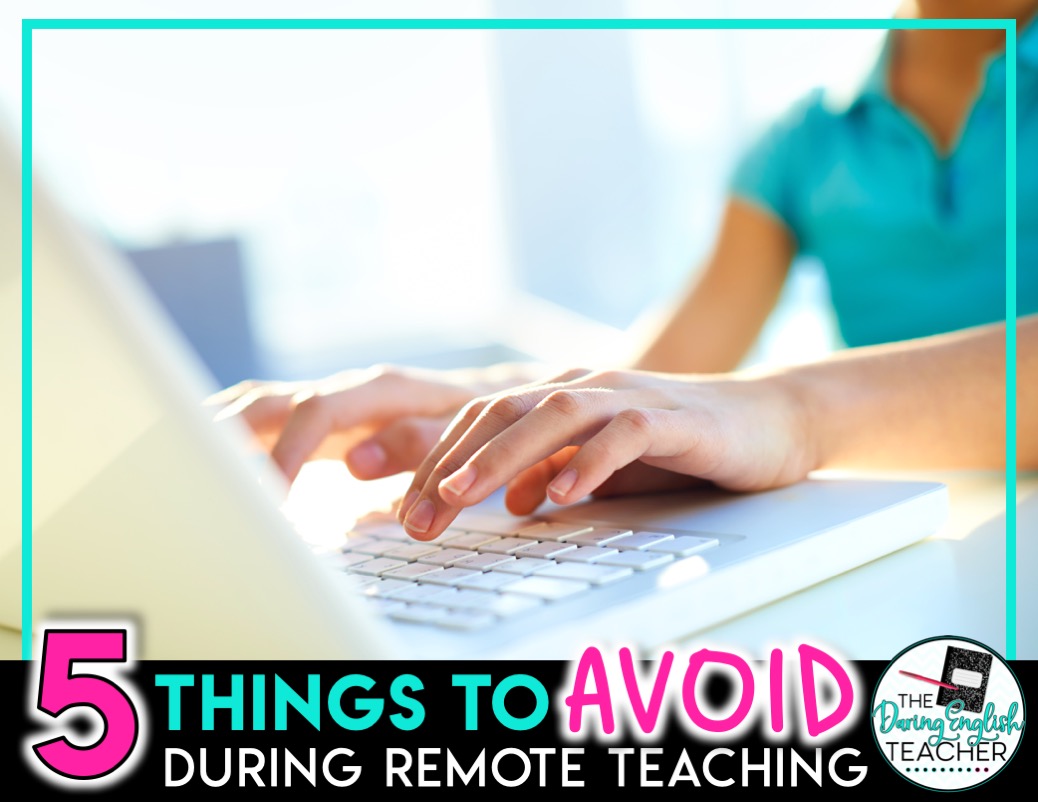At first, the shutdowns started slowly. School districts here and there across the nation closed for just a couple of weeks. And then things got serious -real fast. The week before my district closed was unlike any other week. In essence, my students were a bit more on edge, daily attendance slowly started dwindling, and I kept the news open on one of my computer tabs constantly refreshing it and checking it during each passing period.
Schools around us started closing. The numbers in LA County increased. Entire school districts. Disneyland closed. In all honesty, it felt like the beginning of an apocalypse movie. As an avid fan of The Walking Dead, I kept thinking that this is what it must have felt like in that fictitious world as the infection started to spread. However, this isn’t fiction. It’s reality, and it is a reality for which we weren’t entirely prepared.
We did not become teachers so that we could teach remotely in quarantine. And yet, here were are. However, this absolutely does not go without saying how thankful I am to have my job still and have the ability to teach at home. However, it seems as if the most we can all do right now is our best, given our own unique situations.
One of the most important aspects of teaching remotely right now is to remain in contact with your administration and district personnel. Across the country, we all have different directions and expectations for both ourselves and our students. While some teachers are told not to grade anything or that any work during this time can be used as a detriment to a student’s grade, other teachers are being required to hold meetings, teach new content, and somehow manage a miracle by holding all students accountable.
With that said, here are 5 things to avoid doing while remotely teaching during the COVID-19 Pandemic.
1. Assign Daily Work
Unless if you are explicitly told otherwise by your site or district administration, so not assign daily work to students. We aren’t in regular, status-quo times right now, and we can’t assume that all of our students have equitable access to resources and time to complete daily assignments.
Some of our older students might be watching younger siblings as both of their parents still leave the house to work. Some of our students might be worried about their families because of the fallout caused by the quarantine. Some of our students might be overwhelmed with anxiety, grief, and panic, and daily assignments will only add to their stress.
2. Stick to Strict Deadlines
Before the Pandemic, having strict turn-in deadlines and accepting late work was already a hotly contested topic amongst teachers; however, being flexible with deadlines is even more critical as we remotely teach. Since we don’t know our students’ schedules, limitations, and obligations at home, and since we aren’t physically available to immediately answer student questions as they work, we need to extend them some grade. By assigning deadline windows, by having flexible due dates, and by accepting work late, we are making it possible that more students will be able to take advantage of the learning opportunities.
3. Keep it all Academic
One of the best ways to engage with our students and to make reliable connections with them is to include not focus solely on academics at the moment. Ask students how they are doing. Ask students about how their family is doing. Ask students for suggestions about which TV show to stream next. Your only communication with them during this time should not be just about the academics and workload.
One way to help you do this is to reach out to several students a day and engage with them in a non-academic conversation. One of the best things that worked for me so far is using this (free) daily check-in form. I have an open-ended question on there asking my students what is on their mind, and it has been an enormous help at deciding which students need some extra communication.
4. Stay Glued to the Computer
Setting boundaries as a teacher is now more critical than ever. One of the first steps to setting boundaries is to check with your district or union and see what requirements you have while remote teaching. Some schools and districts are setting schedules for their teachers, so it is essential to abide by those guidelines. Another step to setting boundaries is by setting a schedule that will work for you and sticking to it.
I’ve found that by sticking to my contract hours for availability, it makes it a lot easier to walk away from my laptop in the afternoon and stay away during the evening. Yes, students can still email me and send me Remind messages, but I will respond to those messages the next day. When it is an off-teaching hour, put away the laptop and do something enjoyable.
5. Forget about Self-Care
The last thing to not do during the COVID-19 Pandemic is to forget about self-care entirely. These are stressful times, and the last thing you want to do is neglect your emotional and mental needs. Find time to devote to a hobby. Take a job around the neighborhood. Bake something. Take a bubble bath. Watch mindless television. Whatever it is, make sure that you dedicate some time every single day to do something that you enjoy. To read more about self-care, I wrote a blog post about 25 things teachers can do to practice self-care.
While it is true that we did not sign up for this, here we are. We are all in this together.
Resources for Remote Teaching:
SMARTePlans are a great way to go digital, support remote learning, and save paper!
Digital Growth Mindset Escape Room



